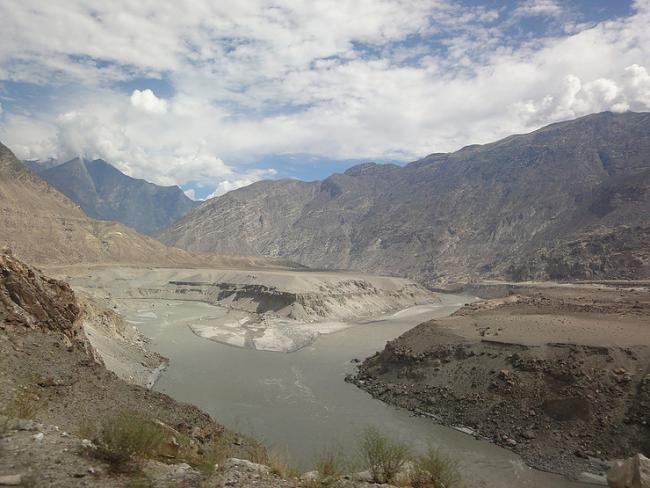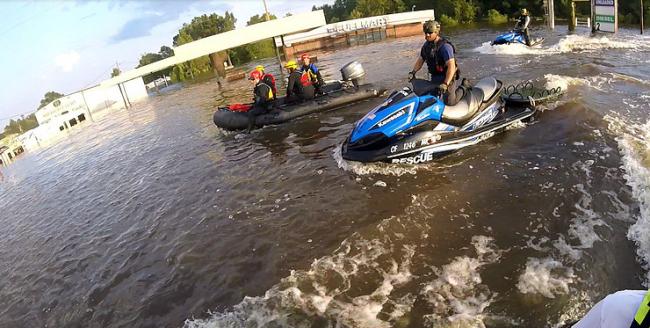Global climate change has brought with it unprecedented and devastating natural disasters the world over. Major climate events such as hurricanes, floods, earthquakes, and tsunamis do not discriminate between the developed and developing world. While levels of wealth, sturdiness of built infrastructure, and formal institutions may vary from richer to poorer countries, the essence of human communities rarely does. To further explore the role of social capital in resilience, post-disaster recovery as seen in Houston, Texas, after the devastating floods caused by Hurricane Harvey in 2017 is compared to the life-altering floods caused along the Indus River basin in Pakistan in 2010.
The two contexts are highly varied and poles apart. Houston is an urban, developed city with world class infrastructure built on flatland in one of the biggest economies in the world, while parts of the provinces of Punjab, Sindh and Khyber-Pakhtunkhwa that fall along the Indus River basin are largely agricultural and rural, varying in topography from mountains to plains and deserts. What the two case studies have in common is that they are situated in flood plains, where such natural disasters, while still rare, have higher chances of taking place.
In 2010, large-scale flooding along the Indus River devastated about one-fifth of Pakistan’s total land area, with damage amounting up to USD 43 billion, affecting a total of 20 million people and taking as many as 1,700 reported lives with uncountable others sustaining injuries. In 2017, Hurricane Harvey was recorded as a Category 4 storm in the United States, the destruction from which amounted to a staggering USD 125 billion, affecting a total of 13 million people and reporting a total of 88 people dead. The urban-rural divide between the two settings shows in the disparity in financial loss and lives lost, where Hurricane Harvey was almost three times costlier than the floods in Pakistan, but the number of lives lost in Pakistan was by contrast nineteen times higher[1].
After highlighting these vast differences in statistics, when it came to post-disaster recovery there were some similarities that could be seen across these highly varying situations. In a quantitative, cross-sectional evaluation conducted by Akbar and Aldrich (2017)[2], flood victims were surveyed and a statistical regression analysis was conducted to measure the impact of social capital on the life recovery of the respondents. As trust and social support are major indicators for social capital, the two main variables used were a post-disaster social support scale (which consists of emotional, informational and tangible support from a social network) and a post-flood social and political trust scale. Social trust consists of trust between neighbors and networks whereas political/institutional trust is toward NGOs and district governments. The outcome variable was life recovery, which includes metrics of readjustment, satisfaction and optimism. These scales have been used in various disaster studies over time by researchers studying the earthquake in Kobe, Japan, to the post-disaster recovery after the tsunami in Indonesia.

In summary, after running multiple models, the first regression with no social capital variables and only socio-economic demographic factors showed that the impact of high material loss resulted in low feelings of life recovery among respondents (statistical significance levels). However, in another model where the two variables for social capital outlined above were regressed along with socio-demographic factors, it showed that the high material loss was no longer statistically ‘significant’ and the impact of material loss on feelings of life recovery had substantially declined. This clearly showed that social capital is a powerful force in disaster recovery and resilience and that “a high level of social capital promotes a sense of recovery despite the presence of material damage” (Akbar, Aldrich, 2017).
Conversely, those who are marginalized socially and economically with low stocks of social capital tend to suffer more, holding material damage as a constant. Marginality can occur due to low levels of bonding and bridging social capital, decreasing both support and access to social networks and resources. In a study conducted by Khan (2014), from the flood victims surveyed, the groups with low rates of recovery and resilience in terms of access to ‘gateway’ resources were the socially and economically marginalized. Gateway resources and systems are defined as core necessities such as drinking water and health, communication, financial and social services, and more. Khan (2014) states, “social and economic marginalization is hypothesized as the primary factor limiting both access and the ability to use and obtain benefits from gateway systems. As a result, the impact, during flood or drought events, is likely to be highest where fragile systems and marginal populations overlap. This intersection makes those affected more vulnerable. Resilience, the reverse of vulnerability, will be highest where access to benefits that a population gets from systems and services is not constrained by social marginality”[3].
Taking a look at post-disaster recovery in Houston, while robust research studies are not yet readily available given the relatively short passage of time since Hurricane Harvey, there are several sources and news stories that show the power of social capital in post-disaster recovery in the area. Firstly, social capital brings with it a strong sense of trust which fosters the spirit of volunteerism and eagerness to help. One such example is the Cajun Navy, a grassroots citizens’ organization that was formed in the aftermath of Hurricane Katrina where citizens took out their boats to go rescue those stranded and in need of supplies. The Cajun Navy is based in Louisiana but has grown immensely and has brought people together in a strong social network on social media. As announcements were made that unknown good Samaritans from Louisiana were on their way in personal boats to help those in Houston, many Houstonians not adversely affected by the floods also joined in as a display of resilience and trust in a community.
Similarly, studies are now being conducted on how informal, local networks saved lives during Hurricane Harvey:
In Houston, as rain continued to fall and flood waters began to choke off streets and ruin houses, many people became trapped in their home. Although they reached out to 911 to ask for rescue, the service flooded—literally and metaphorically. Unable to reach the authorities through standard channels, many Houston residents turned instead to social-media platforms such as Nextdoor. Giving their address or that of their parents or elderly neighbors, Houstonians reached out to anyone with a connection to the internet. Many with boats, including volunteer groups such as the Cajun Navy, used that information to rescue people trapped in homes and on roofs.[4]

When disaster strikes, it has been noted the world over that it is often neighbors who are first responders and, where state shelters may run short, it is faith-based organizations and churches that step up to fill the void. These networks usually kick in after disaster strikes, not in preparation. After observing an increasing number of hurricanes in the United States, the National Science Foundation (NSF) is currently funding research on the ‘Role of social networks and community resources in helping citizens recover from Hurricane Harvey.’ The research is looking at disaster preparedness and how residents who belong to community organizations are losing out on untapped social capital by not promoting and actively working toward disaster preparedness efforts. The research is also looking at ‘linking social capital’ and the need for government agencies and disaster relief organizations to communicate more effectively with residents about preparedness and relief efforts and not only financial and material assistance post-disaster.
Be it Texas or the Indus River basin, the power of human connection and communities coming together cannot be discounted in the face of life-altering natural calamities. In the aftermath of Hurricane Katrina and having lost all material possessions, Aldrich notes that it was not state assistance, such as aid from the Federal Emergency Management Agency (FEMA) or private insurance companies, that were the main propellers in their recovery and getting back on their feet. Instead it was the power of the people around them with ready emotional, physical, and psychological support to get them back to work and put life on track, and “these ties, often called social capital, assist survivors around the world facing crisis.” As this sentiment continues to be echoed in post-disaster efforts around the globe, more and more organizations and states are looking at how social capital can be harnessed and included in governance processes to promote sustainable resilience efforts in a more efficient and effective manner.
[1] Statistics taken and cross-checked from various news sources.
[2] Akbar. S, Aldrich, D. (2017). Social capital's role in recovery: evidence from communities affected by the 2010 Pakistan floods. Disasters. 42. 10.1111/disa.12259.
[3] Khan, F. (2014) Adaptation vs. development: basic services for building resilience, Development in Practice, 24:4, 559-578, DOI: 10.1080/09614524.2014.908823
[4] Research undertaken by Courtney Page and quoted by Daniel P. Aldrich in an article appearing in The Atlantic, titled: Preparing for Hurricane Florence? Think About Your Neighbors (Sep 13, 2018).